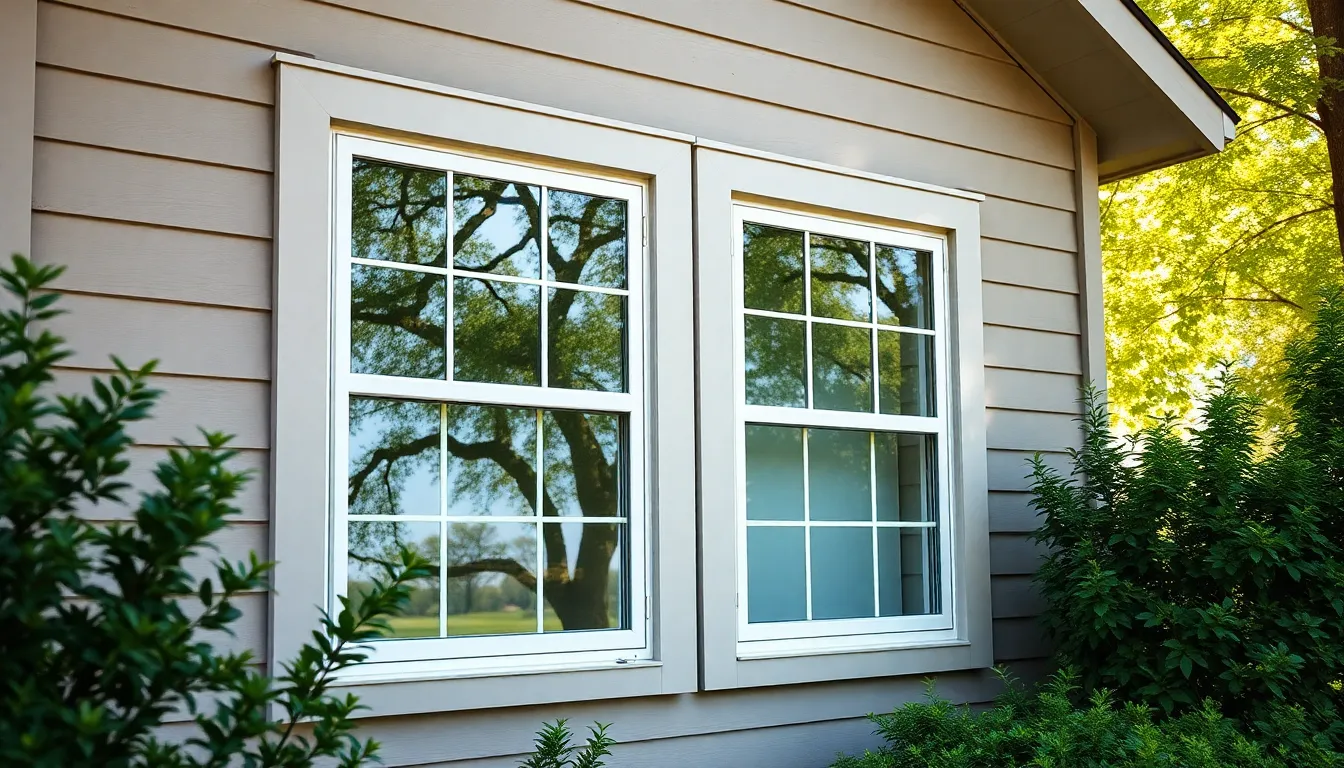When the winds howl and the rain pelts down, most people hunker inside, clutching their hot cocoa. But what if there was a way to keep the storm outside where it belongs? Enter storm windows—the unsung heroes of home protection. These nifty additions not only shield homes from Mother Nature’s tantrums but also save energy and reduce noise.
Table of Contents
ToggleOverview of Storm Windows
Storm windows serve as protective barriers against severe weather. These additions enhance a home’s energy efficiency by creating insulation layers that stabilize indoor temperatures. Additionally, storm windows are available in multiple materials, such as glass and acrylic, ensuring durability and adaptability to different homes.
They provide significant benefits during storms, including filtering out wind, rain, and flying debris. This feature helps in minimizing damage to the primary windows. Noise reduction is another advantage; storm windows can decrease sound pollution from the outside, promoting a quieter living environment.
Installation of storm windows occurs either inside or outside of existing windows. Homeowners can choose to install them seasonally or opt for permanent solutions. When choosing storm windows, consider factors like material type, installation method, and local weather conditions for optimal protection.
Energy savings become apparent when comparing heating and cooling costs before and after installation. Reports indicate that a well-installed storm window can save up to 20% on energy bills annually. Such savings contribute to a more sustainable living environment.
Maintenance for storm windows is generally straightforward. Regular cleaning with mild soap and water keeps them in optimal condition. Homeowners should inspect seals and frames for wear and tear periodically to ensure continued effectiveness.
Storm windows stand as a reliable choice for homeowners looking to improve comfort during extreme weather. These enhancements bolster a home’s integrity while offering energy savings and increased peace and quiet.
Benefits of Storm Windows

Storm windows offer several advantages for homeowners. These benefits range from energy efficiency to noise reduction.
Energy Efficiency
Energy efficiency improves significantly with storm windows. They act as an additional barrier that reduces heat loss during winter and keeps homes cool in summer. In fact, well-installed storm windows may save up to 20% on annual energy bills, according to studies. Homeowners benefit from lower heating and cooling costs, contributing to a more sustainable lifestyle. Easy installation methods allow homeowners to enhance energy conservation quickly. Materials such as glass and acrylic provide strong insulation while ensuring the durability of the product. Increased energy savings directly translate into financial benefits over time.
Noise Reduction
Noise reduction is another key benefit of installing storm windows. They significantly diminish outside disturbances, making living spaces more peaceful. Research indicates that storm windows can reduce noise by up to 50%, creating a quieter indoor environment. Homeowners enjoy improved sound insulation, which is particularly beneficial in busy urban areas. The additional layer of protection blocks external sounds like traffic and construction. Simple maintenance ensures that their soundproofing capabilities remain intact over time. Adapting storm windows to individual needs allows for a tailored solution that enhances comfort.
Types of Storm Windows
Storm windows come in two main varieties: interior and exterior. Each type offers distinct advantages tailored to specific needs.
Interior Storm Windows
Interior storm windows install directly inside primary window frames. They create an extra layer of insulation that enhances energy efficiency. Homeowners benefit from the ease of installation, as these windows can typically be mounted without professional help. Allowing for seasonal use, they can be removed during warmer months to maximize natural light. Cleaning is hassle-free since they remain accessible from inside. Additionally, these windows are effective at reducing drafts and noise from the outside.
Exterior Storm Windows
Exterior storm windows attach to the outside of primary windows, providing robust protection against severe weather. These windows prevent moisture from affecting main windows, thus extending their lifespan. Seasonal options are available, allowing homeowners to customize installations according to local climate conditions. Durability is a key feature, as most materials can withstand harsh environmental factors. Easy to clean and maintain, exterior storm windows also enhance home aesthetics by offering a sleek look. Overall, they significantly improve energy efficiency, minimizing heat loss during winter months.
Installation Considerations
Installation of storm windows encompasses various factors critical to successful implementation. Understanding these factors helps homeowners make informed decisions.
Cost Factors
Costs vary based on materials, installation type, and window size. Acrylic storm windows typically cost between $100 to $300 per window, while glass options range from $200 to $800. Additional expenses arise from installation, with professional services costing $100 to $200 per hour. Homeowners should also consider potential energy savings; effective storm windows can reduce annual energy bills by up to 20%. Researching local pricing can provide a clearer financial picture.
Professional vs. DIY Installation
Choosing between professional installation and DIY options hinges on experience and comfort levels. Professionals ensure precise fitting and adherence to building codes, reducing the risk of issues. They also guarantee warranties for workmanship. DIY enthusiasts can save on labor costs, but they must have the right tools and expertise to achieve quality results. Many interior storm windows offer straightforward installation processes, making them accessible. Homeowners opting for DIY should thoroughly review manufacturer instructions to ensure proper installation techniques.
Maintenance and Care
Maintaining storm windows ensures their longevity and effectiveness. Regular cleaning keeps glass and acrylic surfaces clear, enhancing visibility and light entry. Use a soft cloth and mild soap for this purpose. Inspecting seals and frames periodically helps identify issues before they lead to significant problems.
Cleaning can often be done with standard window cleaners, but make sure to avoid abrasive materials to prevent scratches. Perform thorough checks for any signs of damage, such as cracks or loose fittings. Addressing even minor issues promptly can prevent moisture buildup, which might harm the primary windows.
For exterior storm windows, check for debris that could block drainage holes. Ensuring proper drainage prevents water accumulation, which can compromise window integrity. Seasonal inspections are ideal, typically done in spring and fall, ensuring the storm windows remain functional throughout the year.
Homeowners should also apply lubricant to moving parts, like clips and locks, to maintain ease of operation. It enhances durability and prevents rusting of metal components. If the windows display condensation between the panes, it indicates seal failure. In such cases, prompt replacement of the affected window enhances overall energy efficiency.
Ultimately, dedicating time to regular maintenance of storm windows contributes to their effectiveness in powering energy efficiency, noise reduction, and weather protection. Focusing on straightforward cleaning and inspections creates a healthier indoor environment, minimizing energy costs associated with heating and cooling.
Storm windows offer homeowners a practical solution for enhancing energy efficiency and protecting against harsh weather. With their ability to reduce noise and improve indoor comfort, they’re an investment that pays off over time. By choosing the right materials and installation methods, homeowners can tailor storm windows to fit their specific needs and local conditions.
Regular maintenance ensures these windows remain effective and durable, allowing homeowners to enjoy their benefits for years to come. Ultimately, storm windows not only safeguard homes but also contribute to a more sustainable and cost-effective living environment.


